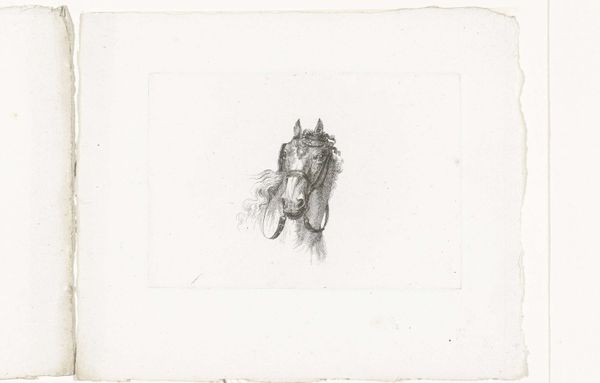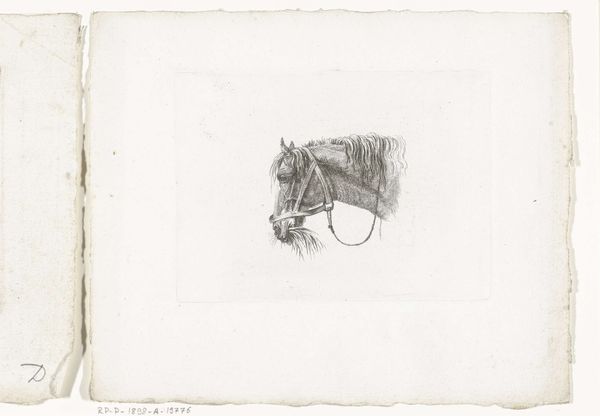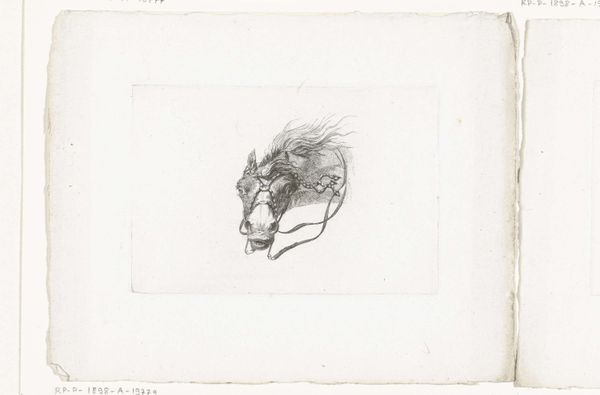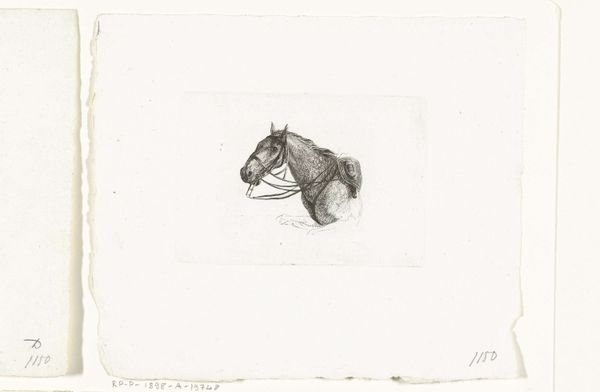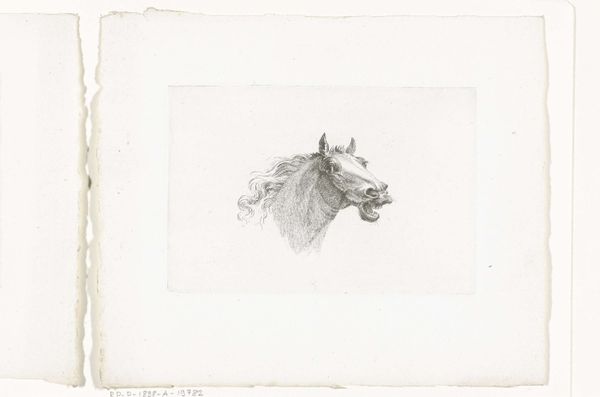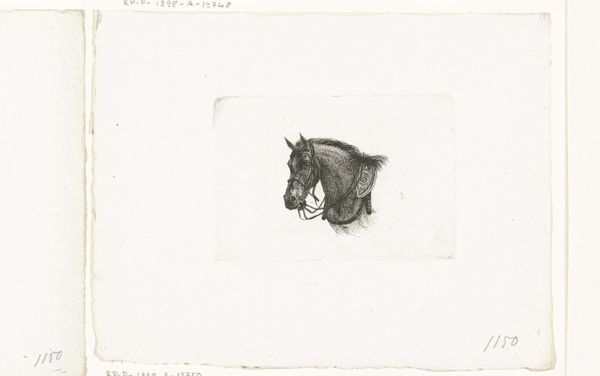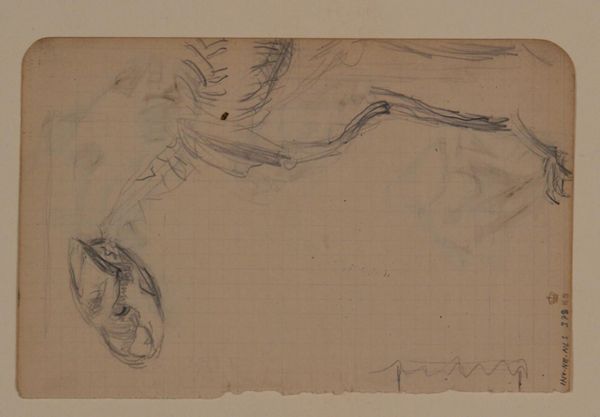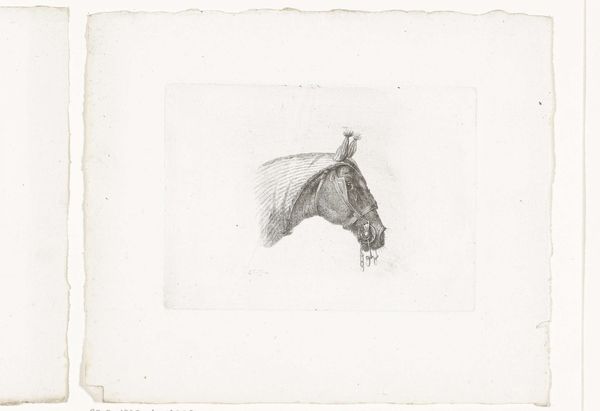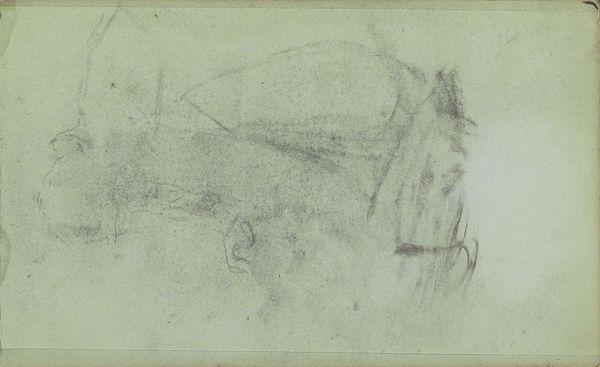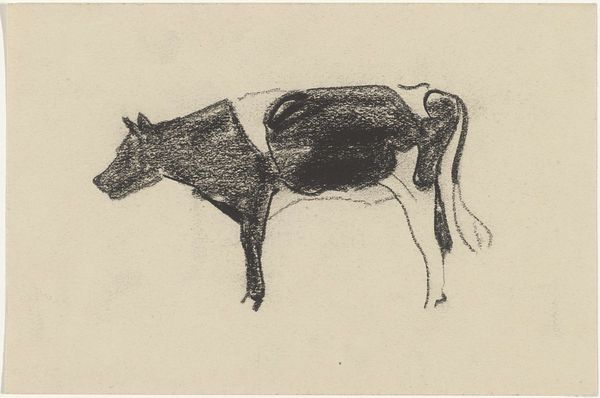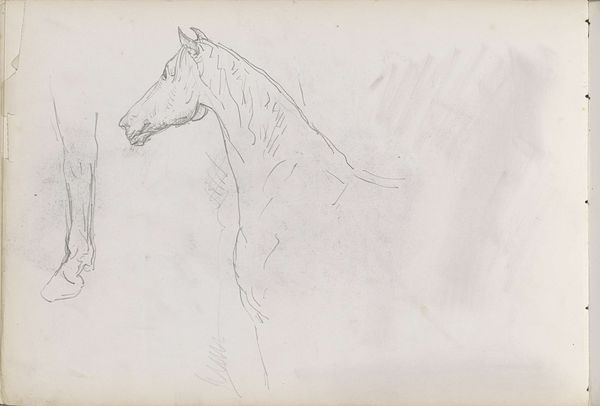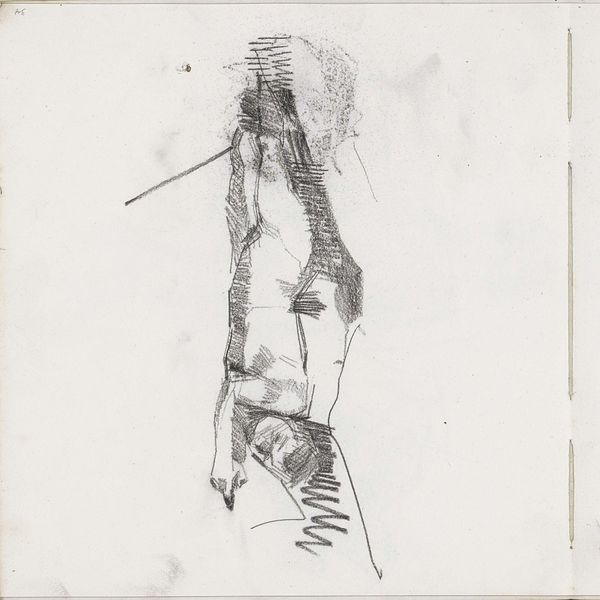
drawing, pencil
#
portrait
#
drawing
#
amateur sketch
#
thin stroke sketch
#
quirky sketch
#
incomplete sketchy
#
personal sketchbook
#
ink drawing experimentation
#
pen-ink sketch
#
pencil
#
line
#
sketchbook drawing
#
fantasy sketch
#
realism
#
initial sketch
Dimensions: height 100 mm, width 140 mm
Copyright: Rijks Museum: Open Domain
Editor: Here we have Joannes Bemme's "Paardenhoofd met hangende leidsels, van voren gezien," or "Horse's Head with Hanging Reins, Seen from the Front," a pencil drawing from before 1841. The sketch feels so immediate and raw; I'm curious, what stands out to you about this work? Curator: Look at the way Bemme used the pencil not just to depict, but almost to *construct* the head of this horse. Each line, each shadow, speaks to a physical act – a deliberate pressing, pulling, and layering of graphite onto the page. We're seeing labor visualized. Do you think the choice of pencil matters here? Editor: Absolutely. I imagine ink would give it a totally different feel—maybe more refined, less…process-oriented. Why do you call this work “labor visualized?" Curator: Because we’re so close to the artist’s hand, his movement, his effort. This isn’t just representation; it’s almost documentation of a specific kind of work, equestrian culture, and perhaps even his economic background enabling this work. The means of production are right there on the surface. Also, notice the hanging reins: were these for his personal use or commissioned for aristocratic owners of stables? The materiality poses fascinating questions of consumption and patronage. Editor: That's a totally fresh way of looking at what I initially perceived as just a simple sketch! Now I wonder about the horse’s social role, the type of work it would have performed, and the statement Bemme was attempting to make in this piece. Thank you. Curator: It highlights how everyday materials and actions carry rich historical context. Analyzing materials lets us go beyond simple aesthetics and deeper into cultural history.
Comments
No comments
Be the first to comment and join the conversation on the ultimate creative platform.
